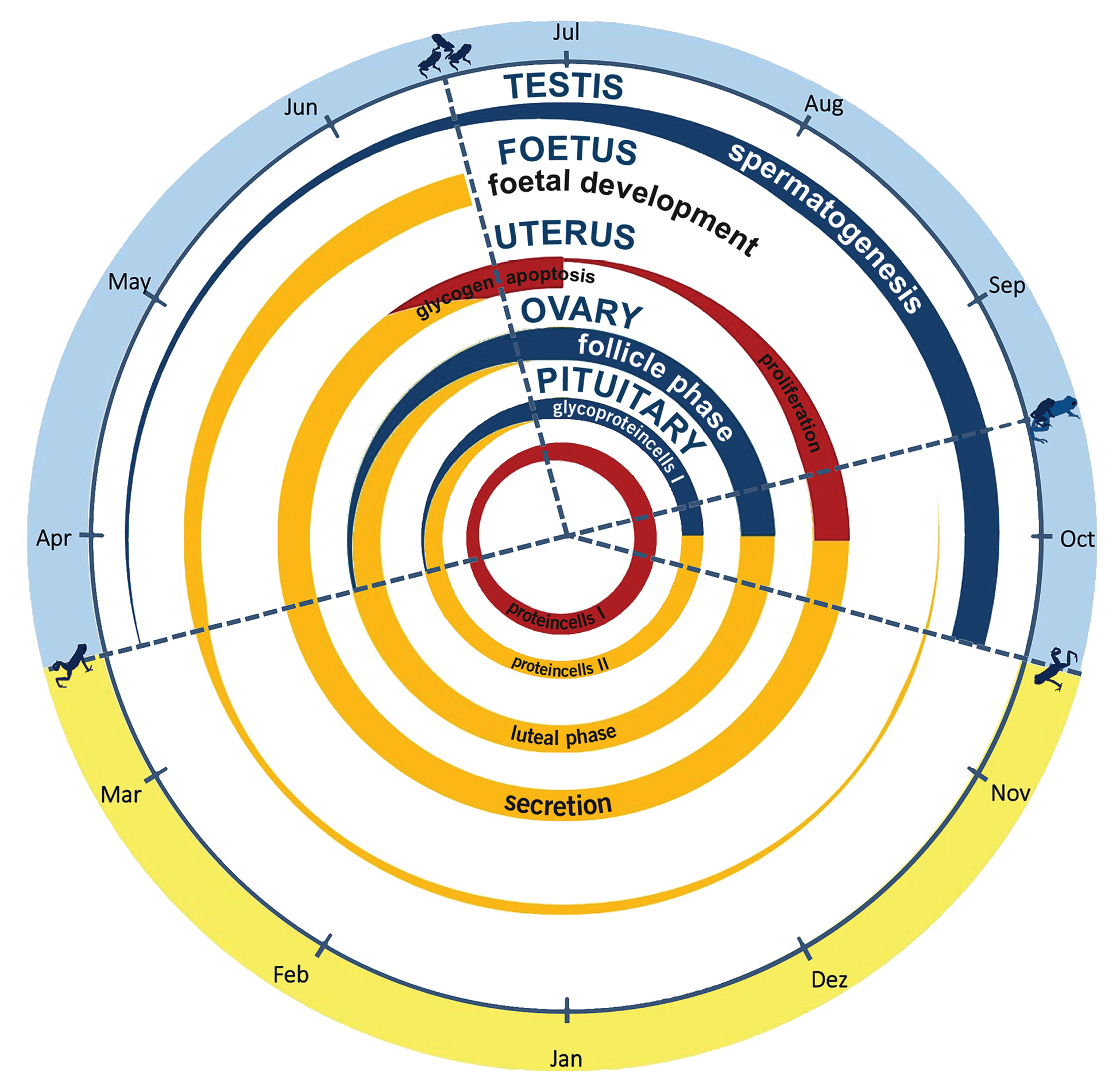
|
||
|
Summary of the temporal development of the foetus and male and female reproductive system. The outer layer gives the months as abbreviations and the seasons by colour (yellow: dry season, blue: rainy season). Toads mate between mid-September and mid-October on average, are going underground mid-October and emerge in mid-March from their dormancy sites. Juveniles are born in mid-June (pictograms). Spermatogenesis shows the development within the male reproductive system. Foetal growth gives the speed of development and growth. The uterus shows three phases: a proliferation phase in which the uterine epithelium develops, a secretion phase during the gestation and an apoptosis phase during which the uterine epithelium is completely exchanged (old one removed and new one built). The ovary has two phases: the follicles phase, characterised by follicle growth and the luteal phase characterised by the presence of corpora lutea. Within the female pituitary three cell types show variation within the annual cycle, the glycoprotein type 1 cells and the protein type 1 and type 2 cells. Within the male pituitary as well three cell types show variation (not shown), glycoprotein type 1 cells and glycoprotein type 2 cells in the same way as those of females, whereas protein type 2 cells are only present in July/ August. |